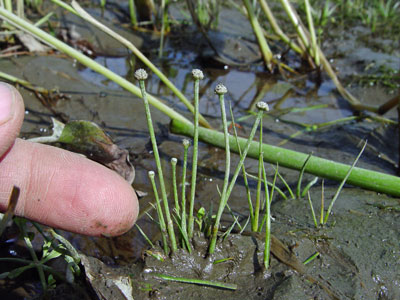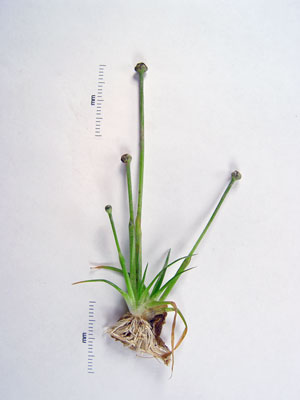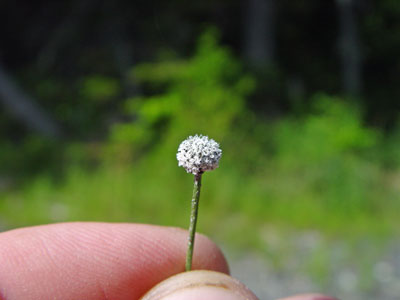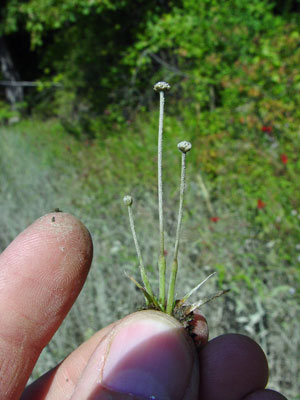DACF Home → Bureaus & Programs → Maine Natural Areas Program → Communities, Plants, and Animals → Rare Plants → Eriocaulon parkeri

Eriocaulon parkeri B.L. Robins.
Parker's Pipewort
- State Rank: S3
- Global Rank: G3
- State Status: Special Concern
Habitat: Fresh to brackish tidal mud and estuaries. [Tidal wetland (non-forested, wetland)]
Range: Virginia to Maine, estuaries of the St. Lawrence River, Quebec. Has become rare as far south as Connecticut; its Maine populations are particularly significant as they are at the northern edge of its range. It is rare anywhere in Canada, also rare in New York and Pennsylvania.

Aids to Identification: Parker's pipewort looks like a diminutive version of the common pipewort (E. aquaticum) which is found in shallow freshwater throughout the northeast. Parker's pipewort, however, grows only 5-10 cm high, with narrow lance-shaped leaves in a basal rosette. Its hemispherical flower heads, each borne on a scape above the foliage, are like small white buttons, measuring 3-4 mm wide. The inflorescences of E. aquaticum are subglobose and measure 4-5 mm wide.
Ecological characteristics: Grows primarily on fresh tidal mudflats, and is often visible only at low tide. It may occur in relatively extensive colonies, or as only a few plants.

Phenology: Flowers July - October.
Family: Eriocaulaceae
Synonyms: None noted.
Known Distribution in Maine: This rare plant has been documented from a total of 19 town(s) in the following county(ies): Cumberland, Kennebec, Lincoln, Penobscot, Sagadahoc, York.

Reason(s) for rarity: Unknown; at northern edge of its range.
Conservation considerations: Prevent degradation of estuary habitat from adjacent land uses.
For more information, see the Native Plant Trust's Conservation Plan for Eriocaulon parkeri.